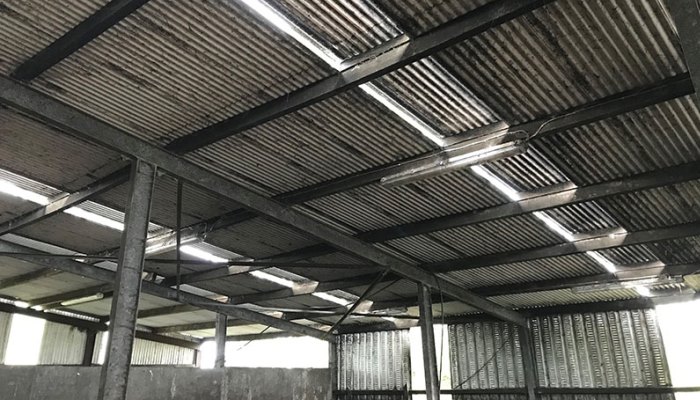13 November 2021
Cattle Housing Ventilation

Temperatures close to 20°C in October highlighted the necessity for well-ventilated animal housing. Recent winters have been mild with few sub-zero temperatures. Recent heavy rainfall has forced some farmers to house cattle especially on wetter lands. Mayo advisor Brian Hughes advises on ventilation
The weather is often very wet and mild in the months of November and December resulting in high humidity in cattle sheds. The weeks immediately after housing is the time when ventilation is most severely tested. Ventilation plays a vital role in maintaining good animal performance, disease control and will also extend the life of the building. Currently the relatively warm weather and good temperatures even at night makes ventilation difficult in calm conditions.
Why ventilate
Ventilation systems in livestock housing serve an important function in maintaining a comfortable animal environment. Ventilation systems continuously remove the heat, moisture and odours created by the livestock and replenish the oxygen supply by bringing in drier, cooler air from outside. Adequate air exchange also removes gases such as ammonia (NH4), hydrogen sulphide (H2S) and methane (CH4) which can be harmful to both the animal and farmer’s health. Efficient ventilation should also get rid of excess moisture, respiratory disease organisms and dust.
Poor ventilation
Signs of poor ventilation are:
- excessive condensation on the roof and other surfaces
- mould growth on timbers
- bad odour resulting from odour in the airspace
- wet coats and dirty hides on cattle.
How to provide natural ventilation
Several key features and characteristics are required in a proper functioning natural ventilation system. These features include the building site, roof slope, ridge opening or the outlet and the openings at the top of the sidewalls or inlets under the eaves. Avoid the interference with airflow around or through the building. Factor this in when planting trees near the farmyard.
A continuous ridge opening is needed for year-round ventilation control. This opening allows warm, moist air to exit the building. Also, a continuous air inlet opening that allows fresh air to enter the building is required. These openings are located at the top of the sidewalls.
Roof slope can also affect the performance of a naturally ventilated building. Generally, a 12 to 15° pitch is required. Low pitch roofs can reduce upward air movement and thus create poor ventilation. Sheds with a higher roof pitch are better for ventilation. The Department of Agriculture specifications outlines the ventilation standards for new animal housing. There are many modifications a farmer can do to a shed to improve the ventilation efficiency. Contact your local advisor for advice on improving shed ventilation.
Protect and monitor your cattle
When cattle are fed to appetite, they produce far more heat than is required to maintain body temperature so this waste heat has to be eliminated from the body and the shed environment. If animals are too warm they will sweat to get rid of excess heat. Clipping a strip of hair along the back bone improves heat dissipation from the body.
Keep a close watch on cattle, especially weanlings which have been recently housed. Note individual animals that do not come forward to feed or are slow to feed and also look for discharges from the nose and eyes. If you suspect animals are sick, check the temperature – it should be about 38°C. If it is above this by more than 1°C you could have a case of pneumonia and this is likely to require a vet’s attention.
Be vigilant when housing cattle over the weeks.
Find more information here on Cattle Housing Ventilation
Teagasc Advisors are regular contributors of articles here on Teagasc Daily. Find your local Teagasc office here
